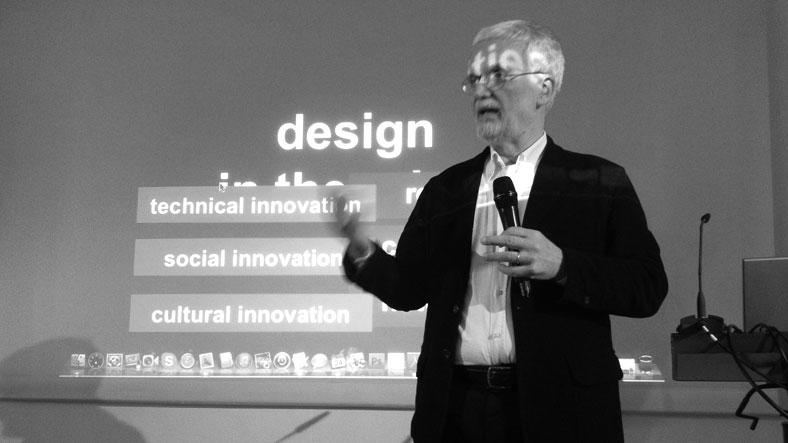
Apr
Reading in the Bathroom | Design, When Everybody Designs
[responsivevoice_button voice=”UK English Female” buttontext=”Listen to Post”]
I was first introduced to design thinking when I attended Ezio Manzini’s Introduction to Design for Social Innovation. Up until that time, I thought the limits of design could be anything tactile, or a finished product: A hammer, a cup, a logo, a building. Ezio introduced me to the idea that anything can and should be designed: How we want to teach our children, how we want to take care of the elderly, how our cities should be run, what kinds of food do we want to eat. Further, he goes on to say that when everyone in our global community is designing (diffuse design) along with design experts (city planners, architects, visual communicators, physicians, etc.) co-designing occurs.
This was me for nearly 90 minutes:

Sponsored by AIGA Baltimore, I was also in attendance with fellow AIGA DC members Anthony Dihle, and Matt Gray. On the train ride back to DC, we continued to discuss the themes Manzini brought up throughout the lecture. I loved the lecture, but I was somewhat critical of his depictions of a community. It would appear to Manzini, a “community” is a young, twenty-something white woman wrapping her arms around a pair of brown people, in grassroots work: Farming, health care, and transportation issues. It rang of white saviourism for the sake of unity.
I don’t necessarily think of grassroots work as ideal symbolism for community. In my mind, the most influential public figures like Hillary Clinton, Condoleeza Rice, Barack Obama, and Sheryl Sandberg are also members of our community. Nonetheless, I bought the book (with Ezio’s signature) and read it over the summer.
What I love about academic works like this when it is applied to design, is that it’s an excellent reference point. There’s no need to read from the first page to the last page to understand sections entitled, Making Things Tangible, Collaborative Organizations, and Making Things Replicable and Connected. The language is meant to be written very abstractly, as these are meant to be applied as you see fit. For example, you and your team create an app that can tell bus riders when their next bus is arriving, along with a co-ordinated street map. That app works specifically for your city, and you want other nearby cities to adopt this app. Reading this excerpt from Design will provide insight:
The idea of replicating may appear to be, and in certain aspects it is, the opposite of experimenting. However, in my view the two practices can and must be complimentary. In the transition it is necessary to experiment, and then consolidate and propogate (i.e. replicate) the best results.
This book is an excellent addition to any designer’s library, particularly those who are interested in the deeper thinking of purpose behind the things we make for others.
Reading in the Bathroom is a book review series by IDSL. Reading is obviously not done in the bathroom exclusively. Sometimes it’s at a park bench, outdoor cafe, or on the train. But the best reading is done in the bathroom. Photo credit: Design Thinking & Beyond


